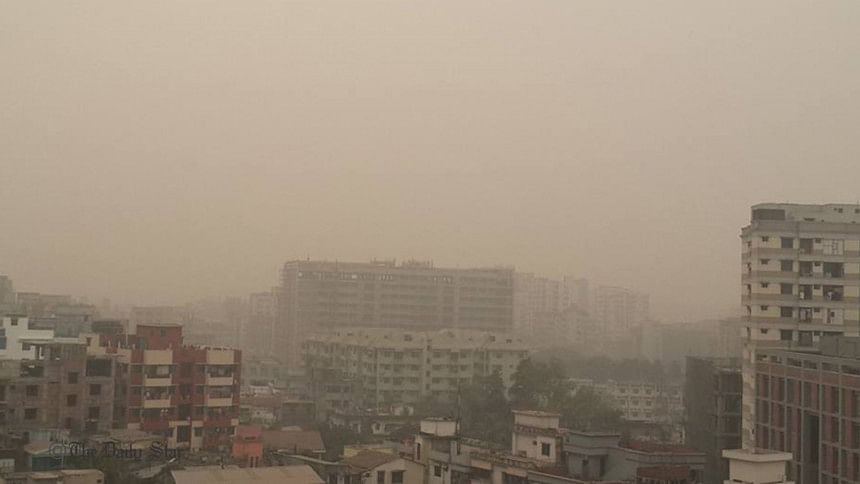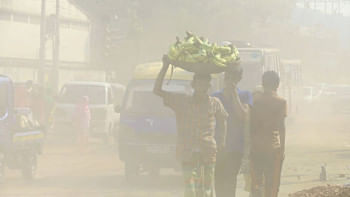What exactly is smog? Is it the reason the sky is hazy and grey today?

If you looked up at the Dhaka sky this morning, and thought winter is here early this year because of the haze that seems to be hanging low and blocking the sun, you would be mistaken.
This is a mistake many make. In fact, the thing that's actually causing this, a phenomenon called smog, is visually quite similar to the fog that usually announces the coming of winter. But smog has a lot more to do with pollution than the change of weather.
The word "smog" is a portmanteau, or a blend word, combining the words "smoke" and "fog". First used in the early 20th century, the word describes the air pollution hanging thick over many British towns at the time. This particular type of smog, often called the "London smog" or sulphurous smog, is a result of sulphur oxides in the air that are produced when fossil fuels like coal are burned. In a damp atmospheric environment, like that in Britain, this sulphur oxide and other particulate matter suspended in the air create a smoky, foggy effect.
While the process described above is how the idea of smog first came to be, the smog in Dhaka and many other densely populated cities today is different. The one we experience these days is most likely to be "photochemical smog". This happens when the nitrogen oxides in the air -- ejected by high volume of traffic and industrial factories -- reacts with hydrocarbons and other volatile organic compounds in the air and produces ozone, among some other compounds. This is the chemical reaction that leads to the brownish grey hue in the atmosphere.
This polluted air is bad for plants, may cause eye irritation, and can even damage lung tissue. This also explains why, when it rains, the air looks so clear. The particulates that may react chemically and become smog is washed down onto the ground, leaving the air momentarily clean. And during winter, the driest season of the year when rain is hard to come by, smog is at its most prevalent.
However, the air quality index (AQI) of Dhaka stood at 194 this morning, a score classified as unhealthy. An ozone concentration of over 70 parts per billion for eight hours is considered unhealthy too. This morning, Dhaka's ozone concentration was over 100 parts per billion.
All of this points to the fact that the smog that makes our busy metropolis look unpleasant is only a symptom of the dangerous levels of pollution we endure day to day. For now, the best we can do is wear masks when we're outside, and close our windows.

 For all latest news, follow The Daily Star's Google News channel.
For all latest news, follow The Daily Star's Google News channel. 



Comments